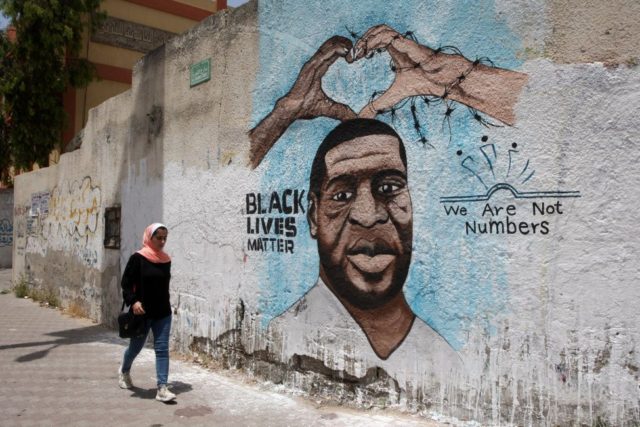April 8 (UPI) — A pair of medical experts testified at the trial of former Minneapolis police officer Derek Chauvin on Thursday that George Floyd died from a lack of oxygen, which damaged his brain and caused his heart to stop.
Dr. Martin Tobin, a pulmonologist and critical care physician from the Chicago area, detailed his opinion about the cause of Floyd’s death on May 25, 2020.
An expert in acute respiratory failure, Tobin said Chauvin’s knee on Floyd’s neck, back and side played a factor in his death. He noted that Chauvin’s knee remained on Floyd’s neck for another 3 minutes after there was no oxygen left in his body.
Floyd’s leg movements during the arrest also indicate that he was experiencing a seizure, Tobin said.
“We see and we can tell from the movement of his leg that the level of oxygen in his brain has caused what we call a myoclonic seizure activity,” he said.
“Basically, it means he has … straightened out his leg, and that is something we see as clinicians in patients when they suffer brain injury as a result of a low level of oxygen.”
Tobin said Floyd was squeezed between the pavement and the force of Chauvin on top of him, and that his breathing was further restricted by the handcuffs being pushed into his back. Also, he noted, Chauvin’s knee against the left side of Floyd’s chest hampered his ability to breathe.
“They’re pushing the handcuffs into his back and pushing them high,” Tobin testified.
“It’s like the left side is in a vice. It’s totally being pushed in, squeezed in from each side.”
Tobin described to the court that video of the arrest indicates to him that Floyd actually tried to push his face into the pavement so that he could create space to breathe.
“He’s actually using his nose and chin and forehead as a way of trying to help him get air into the right side of his chest,” he said, adding that a healthy person also would have died under the same conditions.
Tobin said his analysis found that Floyd experienced a 43% reduction in his oxygen reserves during the arrest.
“[Floyd] has to try to fight against the small volumes he has, and he has to try to lift up the officer’s knee with each breath.”
Dr. Bill Smock, the police surgeon of the Louisville Police Department, offered testimony supporting Tobin’s conclusion, saying Floyd died of positional asphyxia.
“When the body is deprived of oxygen, in this case from his chest pressure and back, he gradually succumbed to lower and lower levels of oxygen until it was gone and he died,” Smock said.
Further commenting on the nature of Floyd’s death, Smock said that bruising does not always occur in cases of death by strangulation.
“You can be fatally strangled, die of asphyxia and have no bruising,” he said. “The presence or absence of a bruise on a human body is dependent upon multiple different variables. How much pressure is applied? How is that pressure applied? How frequently is that pressure applied?”
Smock said that Floyd did not show signs of excitable delirium, when someone grows extremely hot, moves rapidly and exhibits uncommon strength, while noting that CPR should have been started “as soon as Mr. Floyd was unconscious.”
He also said Floyd did not exhibit the symptoms of a fentanyl overdose, as the defense has suggested, as he was not snoring had dilated pupils and was saying “I can’t breathe.”
“That is not a fenatnyl ofverdose. That is someone begging to breathe,” Smock said.
David Isenschmid, a forensic toxicologist at NMS labs, said that tests of Floyd’s blood found that it contained fentanyl, as well as norfentanyl, a metabolized version of the opioid that is not commonly found in overdose victims.
He testified that Floyd’s ratio of fentanyl was 1.96 compared to the average ratio of 9.05 nanograms per milliliter in cases that result in death and 3.2 for driving under the influence.
Jurors heard from other witnesses this week, including forensic scientists who testified Wednesday to finding drugs at the scene that turned out to be opiates and methamphetamine. Chauvin’s defense has tried to argue at trial that drugs played a factor in Floyd’s death.
A Los Angeles Police Department use-of-force expert also testified that Chauvin had indeed used excessive and deadly force against Floyd, echoing another expert who said the same thing earlier this week.
Chauvin faces conviction on a charge of second- or third-degree murder, or second-degree manslaughter. The trial is expected to last a couple more weeks.

COMMENTS
Please let us know if you're having issues with commenting.